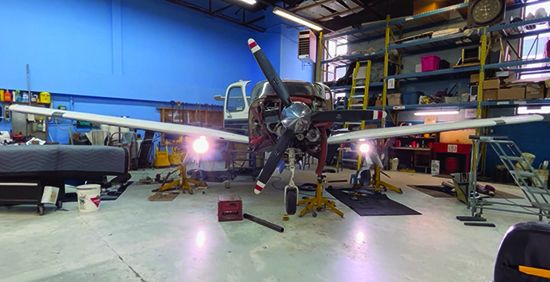The Rockwell Commander 114B that I co-own typically takes two weeks to complete a thorough annual inspection, but that was before the pandemic. The maintenance shop that we have been using has done the 11 preceding annuals on our Commander, as we’ll as routine maintenance. In 2021, the ownership and management of the shop changed hands (let’s call them New School Maintenance) to two “new guys,” who on the surface appear not to have any experience owning and running a maintenance shop.
This year, the Commander went in for its annual on Feb. 13. While many pilots will hand over the keys and logbooks to the shop, we take a more proactive approach. The shop we use is not keen on owner-assisted annuals. One of the shop’s founders would tell me that they had two rates: $90 per hour if they do the work—and $110 per hour if we help. For the past 11 annuals, we’ve followed the same approach where the aircraft goes into the shop and after roughly two or three days for the inspection, we meet with the mechanic and review their findings. From the inspection, we’ll break it down into three classifications of their findings, determine the estimated costs for the repairs and collaborate with the mechanic to determine the repairs to be implemented. The categories include ADs and SBs (or must do), safety or preventive maintenance and cosmetic issues (like yellowing landing light covers).
The average hours spent on each annual is 57, with the annual inspection itself typically taking 29 hours. We like to add new things or do proactive maintenance during the annual inspection to keep the aircraft AOG during the winter months, when our flying activity is the lowest (caused by weather).
The Commander’s 2023 annual inspection started in early February and was completed on April 19, with the shop billing a total of 102 hours. Yikes—that was the longest and most expensive annual inspection to date. There were several factors contributing to the time: The Commander’s muffler had a slight crack found during the AD inspection, and there was difficulty obtaining one set of bushings and bearings required for the landing gear preventive maintenance. During the 2022 annual, our shop’s chief mechanic felt that the landing gear’s bushings and bearings had seen better days, with some play in the landing gear being evident, but not enough play to ground the aircraft. But with supply chain constraints in 2022, the shop’s lead mechanic felt that we should order the parts in but defer the installation until the 2023 annual. Fast forward to February 2023 where the bulk of the bearings and bushings were sitting on the shop’s shelf. However, rather than ordering one set of bearings for each landing gear (four required), they inadvertently ordered one set (two). So the shop reaches out to another shop to order the missing parts, essentially offloading the procurement and logistics process to one of their competitors. Five weeks into the annual, my shop reached out to me and requested that I track down the missing parts. On Friday, I reached out to the folks that manufactured the landing gear for the Commander and on Monday morning, I had the bushings in hand. Next came the search for the bearings. Again, one telephone call later and we had the bearings drop-shipped in. The impact of a few parts on order caused a duplication of efforts on the order of 10 hours.
During the inspection process (which took three days), it was determined that the muffler had a crack. The shop had decided to send the muffler to a local aerospace welding company. The Commander’s exhaust and muffler is made from Inconel and not stainless steel. Inconel is often encountered in extreme environments. It is common in gas turbine blades, seals and combustors, as we’ll as turbocharger rotors and seals. The welding shop did not test the muffler to determine the type of metal, assuming that it was stainless steel. To make a long story short, they used stainless steel tubing and welding rod. Three different welding shops were involved and two weeks into the welding, they were advised that the muffler was Inconel and after five weeks they returned the muffler to my shop advising them that they could not complete the repair. The muffler was then sent to Acorn Welding, who was able to turn it around in two weeks. We’re back in the air, but not without sizable intervention on our part to get things back on the rails.
—Phil Lightstone





